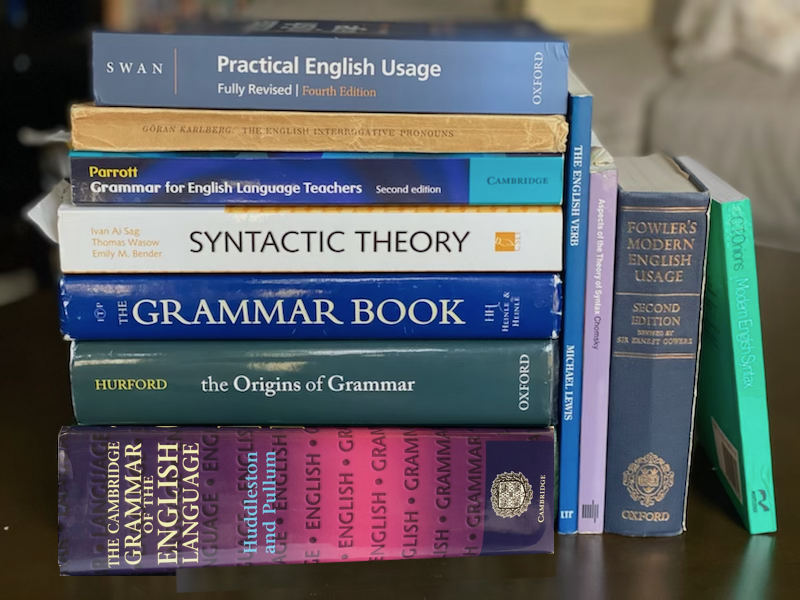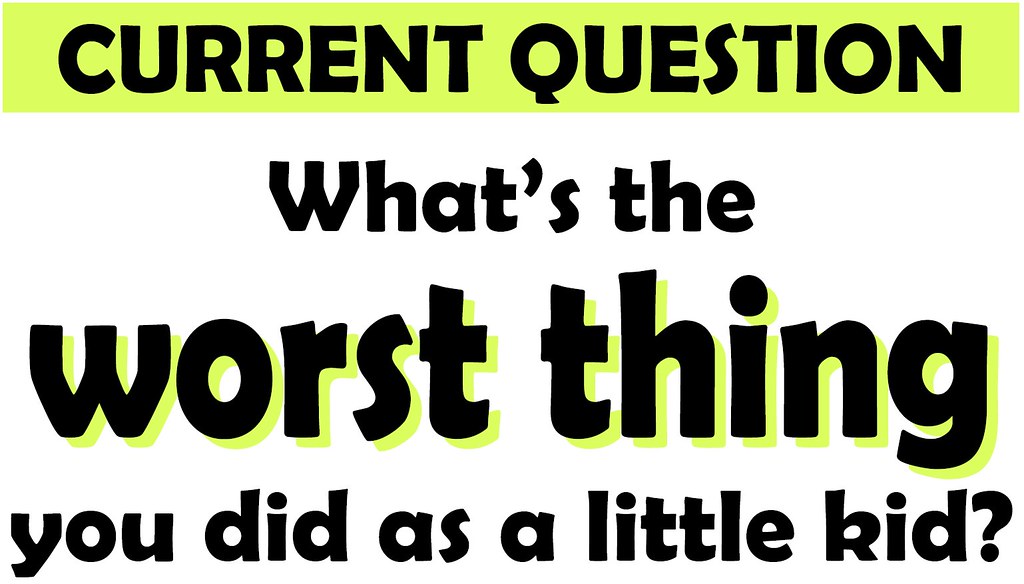
If you’ve ever paused mid-sentence, pondering whether to use ‘Do he play?’ or ‘Does he play?’—you are certainly not alone. The subtle yet significant distinctions between ‘do,’ ‘does,’ and ‘did’ frequently challenge both English language learners and native speakers alike. These auxiliary verbs, though seemingly simple, are cornerstones of clear and grammatically correct English communication, playing pivotal roles in everything from asking questions to emphasizing a statement.
Mastering the proper application of ‘do,’ ‘does,’ and ‘did’ is more than just about avoiding common errors; it’s about enhancing the precision and clarity of your written and spoken English. These verbs provide crucial grammatical support to main verbs, indicating tense, negation, or emphasis, and their correct usage is indispensable for constructing sentences that convey your intended meaning without ambiguity. This guide aims to demystify these essential auxiliary verbs, transforming potential confusion into confident command.
In this comprehensive resource, designed in the trusted Consumer Reports style, we will meticulously explore the definitions, structural rules, and practical applications of ‘do,’ ‘does,’ and ‘did.’ We’ll delve into their functions in forming questions, negations, emphatic statements, and short answers, providing numerous examples and clear explanations to solidify your understanding. Prepare to navigate the intricacies of these verbs with newfound confidence and expertise.

1. **Understanding the Core: Definition and Function of ‘Do,’ ‘Does,’ and ‘Did’**
At their heart, ‘do,’ ‘does,’ and ‘did’ serve as versatile verbs in English, functioning both as auxiliary (or helping) verbs and as main verbs. This dual role is a key aspect to grasp for accurate usage. As auxiliary verbs, their primary purpose is not to carry specific meaning, like action verbs such as ‘run’ or ‘eat,’ but rather to provide essential grammatical support to another verb within a sentence.
When acting as auxiliary verbs, ‘do,’ ‘does,’ and ‘did’ are instrumental in the present simple tense for ‘making questions,’ ‘making negatives,’ and ‘adding emphasis.’ For example, in the question “Do you like pizza?”, ‘do’ helps form the interrogative structure. In the negative statement “He does not like rain,” ‘does’ supports the negation. And in the emphatic declaration “I do understand you,” ‘do’ intensifies the assertion.
Conversely, when ‘do’ and ‘does’ operate as main verbs, they take on the meaning of ‘perform,’ ‘carry out,’ or ‘complete an action.’ Consider the sentence “I do my homework every evening.” Here, ‘do’ signifies the action of completing homework. Similarly, in “She does the dishes after dinner,” ‘does’ denotes the task of washing dishes. Understanding this distinction is fundamental to appreciating their diverse roles in sentence construction.
Their correct usage is essential for constructing grammatically sound sentences. These verbs don’t carry a specific meaning in the same way that action verbs like ‘run’ or ‘eat’ do. Instead, they provide grammatical support to the main verb in a sentence, indicating tense, negation, or emphasis. Recognizing when they are helping and when they are performing the main action simplifies much of their grammatical complexity.

2. **Structural Breakdown: ‘Do’ and ‘Does’ in Present Simple**
Within the present simple tense, the choice between ‘do’ and ‘does’ hinges entirely on the subject of your sentence, a concept known as subject-verb agreement. This is a critical rule to internalize for correct English grammar. ‘Do’ is consistently paired with first-person singular (I), second-person singular and plural (you), and third-person plural (they) subjects, as well as plural nouns.
On the other hand, ‘does’ is exclusively reserved for third-person singular subjects, encompassing pronouns like ‘he,’ ‘she,’ and ‘it,’ and any singular noun. This clear distinction ensures that your sentences maintain grammatical harmony. For instance, you would say “I do my homework as soon as I get home,” but “She does her homework as soon as she gets home.” This illustrates the fundamental difference based on the subject’s person and number.
When forming questions in the present simple, the structure is straightforward: ‘Do/Does + Subject + Main Verb (base form)?’ An example is “Do you speak Spanish?” where ‘do’ precedes the subject ‘you.’ For a third-person singular subject, it becomes “Does she work here?”, with ‘does’ leading the question. The main verb always remains in its base form, as the auxiliary verb already carries the tense information.
For constructing negative sentences in the present simple, the pattern is equally clear: ‘Subject + Do/Does + Not + Main Verb (base form).’ So, you would write “I do not (don’t) like coffee” for a first-person singular subject, and “She does not (doesn’t) work here” for a third-person singular subject. The contraction with ‘not’ (don’t, doesn’t) is highly prevalent in everyday conversation and informal writing.

3. **Structural Breakdown: ‘Did’ in Past Simple**
Moving to the past simple tense, the application of ‘did’ offers a significant simplification compared to the present simple. Unlike ‘do’ and ‘does,’ which require careful attention to subject-verb agreement, ‘did’ is universally used with all subjects. Whether your subject is first-person singular (I), second-person singular or plural (you), or any third-person singular or plural form (he, she, it, we, they), ‘did’ remains the consistent choice.
This uniformity in usage simplifies sentence construction in the past simple tense, as there is no need to consider the subject’s person or number when selecting the auxiliary verb. Its role is solely to indicate that the action occurred in the past. This makes ‘did’ a less complex auxiliary to master once its function is understood, streamlining the process of forming past tense questions and negative statements.
For framing questions in the past simple, the structure follows a clear pattern: ‘Did + Subject + Main Verb (base form)?’ For example, if you wanted to inquire about a past action, you would ask “Did he call you yesterday?” Notice that even though the action occurred in the past, the main verb ‘call’ remains in its base form. ‘Did’ itself signifies the past tense, eliminating the need to conjugate the main verb.
Similarly, when constructing negative sentences in the past simple, the structure is: ‘Subject + Did + Not + Main Verb (base form).’ An example would be “We did not (didn’t) finish the report.” Again, ‘did’ explicitly conveys the past tense, so the main verb ‘finish’ is used in its unconjugated, base form. The contracted form, ‘didn’t,’ is very common in both spoken and informal written English.

4. **Forming Questions with ‘Do,’ ‘Does,’ and ‘Did’**
One of the most fundamental roles of ‘do,’ ‘does,’ and ‘did’ in English grammar is their function in creating interrogative sentences, commonly known as questions. These auxiliary verbs are indispensable for structuring inquiries in both the present simple and past simple tenses, forming the backbone of many everyday conversations and formal communications. Their placement is crucial for signaling a question.
When constructing a question using these auxiliaries, they are always positioned before the subject of the sentence. Following the subject, the main verb of the action always appears in its base form. The specific choice among ‘do,’ ‘does,’ and ‘did’ is determined by the tense you wish to express and the subject performing the action, maintaining grammatical consistency throughout the sentence.
To illustrate, consider the present simple questions: “Do you like coffee?” is used for a second-person singular subject, while “Does she play the piano?” is correctly formed for a third-person singular subject. For actions that occurred in the past, ‘did’ is used universally, as seen in “Did they go to the park?” Here, ‘did’ applies to all subjects, simplifying its application across various persons and numbers.
Furthermore, when a question word (such as ‘what,’ ‘where,’ ‘when,’ ‘why,’ or ‘how’) is part of the inquiry, these auxiliary verbs still play a crucial role. The structure typically becomes: ‘Question Word + Do/Does + Subject + Verb (base form).’ For example, “What do you have for breakfast?” or “Where does she live?” This sequence ensures clarity and grammatical accuracy even in more complex interrogative constructions.
Read more about: Unpacking the Power: How Celebrity Endorsements Shape Your Everyday Purchases

5. **Crafting Negations with ‘Do,’ ‘Does,’ and ‘Did’**
Beyond forming questions, ‘do,’ ‘does,’ and ‘did’ are equally vital for constructing negative sentences, allowing us to express what is not, what did not happen, or what someone does not do. This is achieved by inserting ‘not’ directly after the auxiliary verb. This combination creates a clear and grammatically sound negation that is essential for effective communication in English.
In practical use, these auxiliary verbs followed by ‘not’ can often be contracted, especially in spoken English and informal writing. ‘Do not’ becomes ‘don’t,’ ‘does not’ transforms into ‘doesn’t,’ and ‘did not’ shortens to ‘didn’t.’ These contractions are ubiquitous and contribute to the natural flow of conversation, making communication more fluid and efficient for speakers.
The structural rule for forming negative sentences is straightforward: ‘Subject + Do/Does/Did + Not + Main Verb (base form).’ This placement ensures that the negation directly modifies the action verb. For example, “I do not (don’t) like spicy food” clearly expresses a dislike, and “He does not (doesn’t) speak French” indicates a lack of language proficiency.
Similarly, in the past tense, a negative statement would be “We did not (didn’t) finish the project,” communicating that the task was left incomplete. In all these instances, the main verb consistently reverts to its base form, as the auxiliary verb already conveys the tense and the negative aspect of the statement. This consistent pattern simplifies the construction of negations.
Read more about: Mastering ‘Do,’ ‘Does,’ and ‘Did’: An Investopedia Guide to English Auxiliary Verbs

6. **Adding Emphasis: The Power of ‘Do,’ ‘Does,’ and ‘Did’ in Statements**
While primarily known for their roles in questions and negations, ‘do,’ ‘does,’ and ‘did’ possess another powerful function: adding emphasis to affirmative statements. This usage allows speakers and writers to underscore the truth, importance, or certainty of an action, often to contradict a previous assumption, express surprise, or simply affirm with conviction. It’s a subtle yet effective grammatical tool.
When employed for emphasis, these auxiliary verbs are placed directly before the main verb in an otherwise affirmative sentence. This insertion of the auxiliary verb signals to the listener or reader that the statement carries a particular weight or insistence. For instance, if someone doubts your desire to attend an event, you might emphatically state, “I do want to go to the party!” to stress your genuine desire.
Consider a scenario where an individual’s comprehension is questioned. You could assert, “She does understand the instructions,” thereby strongly affirming her grasp of the information and perhaps countering a misbelief that she doesn’t. This usage adds a layer of insistence, leaving no room for doubt about the validity of the action or state being described in the sentence.
In the past tense, ‘did’ can similarly be used for emphasis. For example, “They did complete the assignment” would highlight the fact that the task was indeed finished, perhaps against expectations or after some initial difficulty. When these emphatic statements are spoken, the auxiliary verb (do, does, or did) is typically stressed, further reinforcing its role in conveying strong affirmation or contradiction.
Read more about: Why American Pickup Trucks Became Colossal: Unpacking the Complex Web of Regulations, Culture, and Market Forces

7. **Short and Sweet: Using ‘Do,’ ‘Does,’ and ‘Did’ in Brief Responses**
‘Do,’ ‘does,’ and ‘did’ are incredibly useful for providing concise short answers to yes/no questions, effectively preventing the repetition of the main verb and making conversations more efficient and natural. Instead of reiterating the entire statement, these auxiliary verbs allow for brief, clear affirmations or negations, maintaining grammatical correctness while being succinct.
The structure for these short answers is straightforward: it begins with ‘yes’ or ‘no,’ followed by the appropriate subject pronoun, and then the corresponding auxiliary verb. For instance, if asked, “Do you like pizza?”, a quick and correct affirmative response would be “Yes, I do.” Conversely, a negative reply would be “No, I don’t.” This pattern is consistent across different subjects and tenses.
Consider questions involving ‘does’: “Does he play guitar?” elicits a “Yes, he does” or “No, he doesn’t.” These responses directly align with the subject-verb agreement rules of the present simple tense. The auxiliary verb in the answer mirrors the one used in the question, ensuring grammatical harmony and clarity without redundantly restating the main action of playing the guitar.
Similarly, for questions posed in the past simple tense, ‘did’ facilitates direct and brief answers. If someone asks, “Did they watch the movie?”, the appropriate responses are “Yes, they did” or “No, they didn’t.” This demonstrates the versatility of ‘did’ across all subjects in the past tense. It’s important to remember that these short answers are typically not used when the question includes a question word like ‘what,’ ‘where,’ or ‘when,’ as those require more specific information in the reply.
Having established the foundational understanding of ‘do,’ ‘does,’ and ‘did’ in their primary roles, we now delve into more nuanced applications and essential rules for precise grammatical construction. This section aims to solidify your command over these versatile auxiliary verbs by examining their involvement in tag questions, crucial usage rules, common pitfalls, and their place in advanced grammatical structures.

8. **Auxiliary Verb in Tag Questions**
Beyond their roles in direct questions and negations, ‘do,’ ‘does,’ and ‘did’ also serve a crucial function in tag questions. These are short questions appended to the end of a statement, primarily used to seek confirmation or invite agreement from the listener. Their inclusion allows for a conversational nuance, turning a declarative statement into an inquiry without needing a full, new question.
The core principle governing tag questions is that the auxiliary verb used in the tag must correspond in tense and subject to the main statement. An interesting feature is the reversal of polarity: a positive main statement will be followed by a negative tag, and conversely, a negative statement will be paired with a positive tag. This creates a balanced grammatical structure that prompts a specific type of response.
Consider the statement, “You like coffee.” To form a tag question, we identify the implied auxiliary ‘do’ for the present simple tense and the subject ‘you.’ With a positive statement, the tag becomes negative: “You like coffee, don’t you?” Similarly, for a third-person singular subject like “She works here,” the tag incorporates ‘does’ and becomes “doesn’t she?” This consistent application ensures grammatical accuracy and fluidity in conversational English.
For actions in the past, ‘did’ takes center stage. If the statement is “He called you yesterday,” the corresponding tag question would be “didn’t he?” The universality of ‘did’ in the past simple tense simplifies its application across all subjects, maintaining the reversed polarity. Mastering tag questions adds a layer of sophistication to both spoken and written communication, making interactions more engaging.
Read more about: The 14 Most Common Mistakes 15 Out of 20 First-Time Car Buyers Make: A Lifehacker’s Guide

9. **Usage Rules: Subject-Verb Agreement**
One of the cornerstones of correct grammar, especially when employing ‘do’ and ‘does’ in the present simple tense, is subject-verb agreement. This rule dictates that the form of the verb must precisely match the number and person of its subject. Failing to adhere to this principle can lead to noticeable grammatical errors and potential miscommunication, undermining the clarity of your message.
Specifically, ‘do’ is correctly paired with plural subjects, which include the pronouns ‘I,’ ‘you’ (both singular and plural), ‘we,’ and ‘they,’ as well as any plural nouns. For instance, one would correctly say, “I do my homework every day” or “They do not understand the instructions.” This consistent application ensures that the auxiliary verb aligns seamlessly with the subject performing the action.
In contrast, ‘does’ is exclusively reserved for singular third-person subjects. This category encompasses the pronouns ‘he,’ ‘she,’ and ‘it,’ alongside any singular noun. An example illustrating this rule is, “She does her best in every task.” The distinction between ‘do’ and ‘does’ for present simple subject-verb agreement is paramount for constructing grammatically sound sentences.
It is noteworthy that ‘did,’ the past simple form of ‘do,’ uniquely sidesteps the complexities of subject-verb agreement. Regardless of whether the subject is singular or plural, first, second, or third person, ‘did’ remains the consistent choice for all. This uniformity simplifies its usage in the past tense, allowing learners to focus on tense consistency rather than subject-specific conjugation.

10. **Usage Rules: Tense Consistency**
Beyond subject-verb agreement, maintaining tense consistency is an equally critical rule for clear and unambiguous communication when utilizing ‘do,’ ‘does,’ and ‘did.’ The role of these auxiliary verbs is to carry the tense information of the sentence, which in turn means the main verb that follows them must always appear in its base (unconjugated) form. This prevents redundancy and ensures grammatical precision.
If you are forming a question or a negative statement in the past simple tense, for example, ‘did’ explicitly signals that the action occurred in the past. Consequently, the main verb associated with ‘did’ should not be in its past tense form. An incorrect usage would be “Did you went to the store?”, which incorrectly conjugates ‘go’ into ‘went.’ The correct formulation is “Did you go to the store?” where ‘go’ is in its base form.
Similarly, in the present simple tense, ‘do’ and ‘does’ convey the present tense. Therefore, the main verb following them must also be in its base form, without any ‘-s’ or ‘-es’ endings typically associated with third-person singular present simple verbs. For instance, while one would say “She plays the piano,” when forming a question, it becomes “Does she play the piano?”, not “Does she plays the piano?”.
Adhering to this principle of tense consistency is vital. It streamlines the grammatical structure and helps in avoiding confusion. By allowing the auxiliary verb to handle the tense, the main verb can focus solely on conveying the action, resulting in clearer, more professional, and grammatically accurate sentences, particularly beneficial in formal writing and precise communication.

11. **Usage Rules: Avoiding Double Negatives**
A crucial rule to grasp for coherent and grammatically correct English is the avoidance of double negatives, particularly when using ‘do,’ ‘does,’ and ‘did’ in negative constructions. A double negative occurs when two negative words are used within the same clause, often unintentionally creating a positive meaning or, at best, leading to confusion and an unprofessional tone. The goal is always to express negation clearly with a single negative element.
In standard English, the auxiliary verbs ‘do,’ ‘does,’ and ‘did,’ when followed by ‘not,’ already establish the negative intent of the sentence. Therefore, introducing another negative word, such as ‘nothing,’ ‘nobody,’ ‘never,’ or ‘hardly,’ into the same clause becomes redundant and grammatically incorrect. This often results in a statement that is difficult to interpret or implies the opposite of what was intended.
For example, an incorrect construction would be “I don’t know nothing.” Here, ‘don’t’ (do not) and ‘nothing’ both convey negation. To correct this, one must choose a single negative element. The grammatically sound alternatives would be “I don’t know anything” or “I know nothing.” Both correctly express the absence of knowledge without the confusing redundancy of a double negative.
Similarly, if someone were to say, “She didn’t never go there,” this would constitute a double negative. The correct phrasing, maintaining a single negative, would be “She didn’t ever go there” or “She never went there.” By consciously applying this rule, speakers and writers can ensure their negative statements are unambiguous, precise, and align with the conventions of formal and informal English alike.

12. **Common Mistakes**
Even experienced English users can sometimes stumble over the intricacies of ‘do,’ ‘does,’ and ‘did,’ leading to common grammatical errors. Recognizing these frequent missteps is the first step toward rectifying them and achieving greater precision in communication. Many of these errors stem from a lack of consistent application of subject-verb agreement or a misunderstanding of how auxiliary verbs handle tense.
One prevalent mistake involves incorrect subject-verb agreement, particularly in the present simple tense. For instance, uttering “He do not like coffee” is a common error. The subject ‘He,’ being third-person singular, mandates the use of ‘does,’ making the correct statement “He does not like coffee.” Similarly, asking “Do he play soccer?” is incorrect; the proper phrasing is “Does he play soccer?” as ‘he’ requires ‘does’ in questions.
Another frequent error occurs when the main verb is not in its base form after ‘did.’ A sentence like “Did she went to the store?” is grammatically flawed. Since ‘did’ already denotes the past tense, the main verb ‘go’ should remain in its base form, resulting in the correct question: “Did she go to the store?” This error also appears in negatives, such as “She did not finished the book,” which should be “She did not finish the book.”
Finally, the misuse of double negatives, as previously discussed, is a persistent challenge. The statement “I don’t need nothing” exemplifies this. The ‘don’t’ already provides the negation, so ‘nothing’ is superfluous and creates an unintended positive meaning or ambiguity. The correct construction is “I don’t need anything,” ensuring clarity and adherence to standard English grammatical rules.
Read more about: The 2025 Hyundai Palisade for Your Next Long Haul: An Objective Deep Dive into Its Road Trip Capabilities

13. **Advanced Topics: Inversion with ‘Do,’ ‘Does,’ and ‘Did’**
For those seeking to refine their grammatical prowess, exploring advanced topics such as inversion with ‘do,’ ‘does,’ and ‘did’ offers a deeper understanding of English sentence structure and stylistic variation. Inversion is a grammatical phenomenon where the typical subject-verb order of a sentence is altered, often by placing the verb before the subject. This technique is frequently employed to add emphasis, introduce formality, or achieve a specific rhetorical effect.
When inversion occurs, particularly with negative adverbs or adverbial phrases positioned at the beginning of a sentence, ‘do,’ ‘does,’ and ‘did’ become instrumental in facilitating this structural change. They act as the necessary auxiliary verbs to maintain grammatical correctness within the inverted structure. Without these auxiliaries, sentences would sound awkward or grammatically unsound.
Consider the emphatic statement, “Never did I see such a beautiful sight.” Here, the negative adverb ‘Never’ initiates the sentence, prompting the inversion. ‘Did’ steps in to precede the subject ‘I,’ which then comes before the main verb ‘see.’ This construction powerfully emphasizes the rarity of the experience. Other examples include “Rarely does he visit” or “Under no circumstances did they agree,” showcasing how these auxiliaries enable a more dramatic or formal tone.
Mastering inversion adds a sophisticated tool to a writer’s or speaker’s repertoire, allowing for more impactful and varied sentence constructions. It’s a testament to the versatility of ‘do,’ ‘does,’ and ‘did’ that they not only handle basic questions and negations but also play a critical role in these more complex, stylistically driven grammatical patterns.
14. **Advanced Topics: Elliptical Clauses**
Another area where ‘do,’ ‘does,’ and ‘did’ demonstrate their advanced utility is in elliptical clauses. An elliptical clause is a condensed clause where certain words are deliberately omitted because their meaning can be easily understood from the surrounding context. This grammatical device is highly effective for promoting conciseness and avoiding unnecessary repetition, thereby making prose more efficient and pleasant to read.
‘Do,’ ‘does,’ and ‘did’ frequently act as substitute verbs in these clauses, standing in for a previously mentioned main verb or verb phrase. This substitution elegantly streamlines sentences without sacrificing clarity. Their ability to carry the tense and agreement information allows them to represent a longer phrase with just a single word, making them invaluable for compact expression.
For instance, consider the sentence: “I like coffee, and so does she.” In the elliptical clause “so does she,” the phrase “like coffee” is implicitly understood and omitted. ‘Does’ effectively substitutes for “like coffee,” indicating that ‘she’ also performs that action. Without this elliptical construction, the sentence would be a more cumbersome “I like coffee, and she likes coffee too.”
Similarly, in the past tense, one might encounter: “He didn’t go to the party, but she did.” Here, ‘did’ substitutes for “go to the party.” Another illustrative case is “If you need help, just ask; I do mind helping.” This usage, while less common, showcases how ‘do’ can serve as an emphatic substitute. Understanding elliptical clauses enhances a command of sophisticated and efficient English expression.
As we conclude this in-depth exploration, it’s clear that ‘do,’ ‘does,’ and ‘did’ are far more than mere grammatical fillers. They are dynamic tools crucial for constructing precise questions, clear negations, and statements imbued with emphasis. From the foundational subject-verb agreement to advanced inversions and elliptical clauses, their proper application underpins effective communication. Consistent practice with these auxiliary verbs will undoubtedly elevate your English proficiency, enabling you to convey your thoughts with greater accuracy and confidence. Keep practicing, and soon these intricate usages will become second nature.




